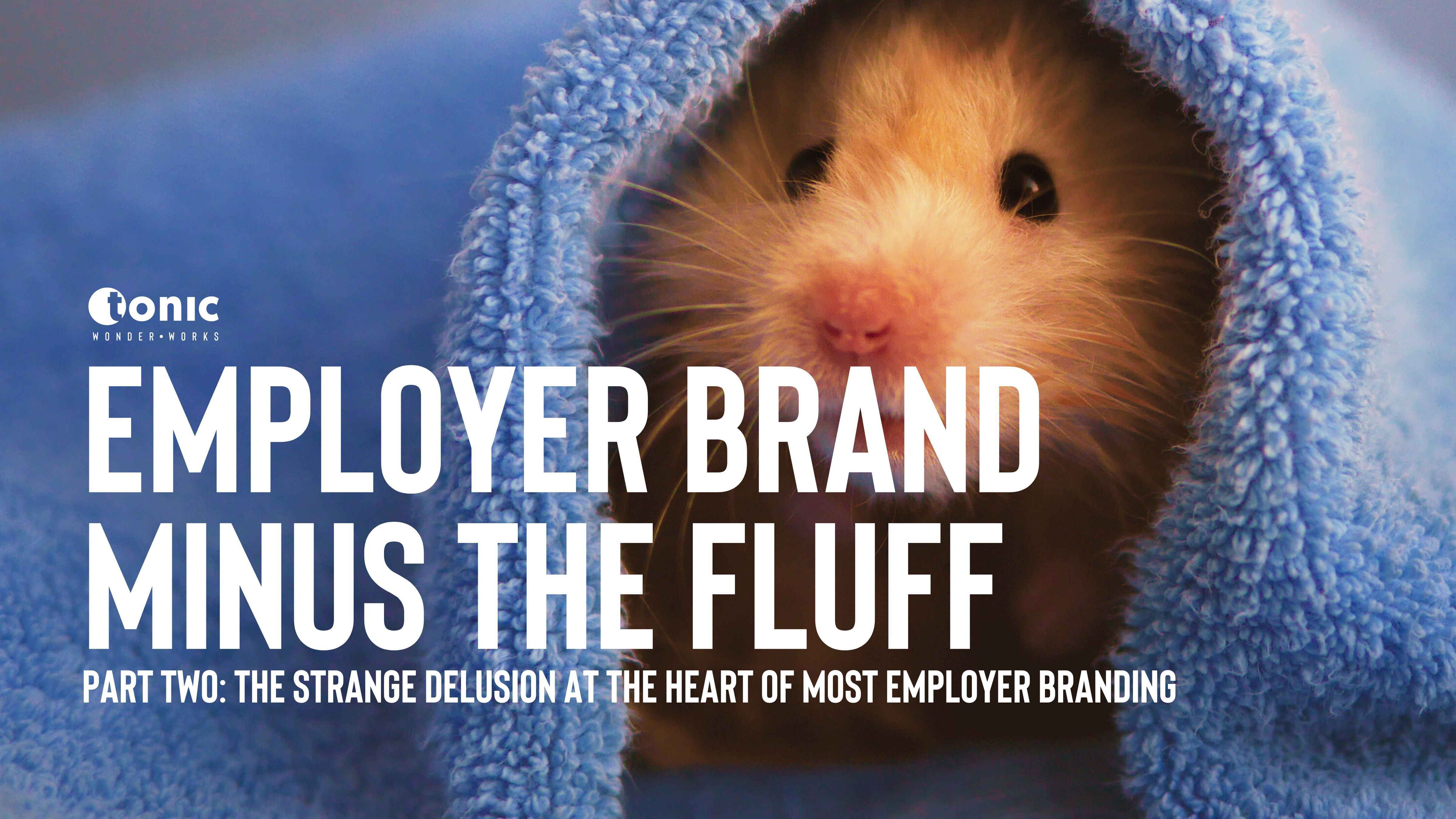Let’s begin with a heresy: consistency is overrated.
Not always, of course. The aeroplane I flew on to get to the UAE in April was, thankfully, designed with the principle of mechanical consistency in mind. But in brand communications, and especially in Employer Branding, consistency is often treated like a religion, when really, it ought to be more like jazz.
It’s not that consistency is wrong. It’s just that humans are not logical, uniform creatures. They’re messy, status-sensitive, culturally coded beings who respond not to what is said, but how it’s framed. So trying to launch a single, uniform EVP across the globe is a bit like designing a universal curry. It might offend no one. But it excites no one either.
The problem with global EVPs
The desire for a single global EVP makes perfect sense to the rational mind.
Economies of scale! Message clarity! Strategic alignment!
But viewed through the lens of human behaviour, it’s a classic example of what some people call “metric capture”. Where we prioritise what’s easy to measure (consistency) over what truly matters (resonance, motivation, meaning).
And there is the rub: most EVPs are too generic to offend, but too bland to inspire. Especially once they’ve been wrung dry by committee, and translated with all the emotional fidelity of a Google Doc.
You end up with lines like “Empowering futures, together”, which could just as easily be a pension fund, a tech startup, or a motivational fridge magnet.
What alignment really means
Here’s a better model: coherence over conformity.
You could think of your EVP like a musical score. Your core purpose and values (the melody), stays the same. But the arrangement can and should change. It’s perfectly reasonable that your EVP would sound different in Munich than in Mumbai. The people are different. Their incentives, aspirations, and contexts are different. It would be weird if it didn’t flex.
In fact, trying to standardise emotional meaning globally is a bit like trying to enforce one universal sense of humour. Good luck telling a Texan, a Tokyoite, and a Tunisian the same joke and expecting equal laughter.
Tonic’s principles for global-local balance
I’m not suggesting we give up on alignment. Merely that we reframe it using a bit more… finesse. Here’s how we do it at Tonic:
1. Start with human truths
Not corporate ones. Listen to what your boardroom thinks the brand is. Then put that to one side. Better to start with what employees feel it is. Emotions travel much better than mission statements. Now bring back the board perspective.
2. Don’t just translate, transcreate
A word-for-word translation rarely captures the status-laden, emotionally nuanced subtext of your EVP. You need creative licence. You need interpretation. You need local talent with veto power.
3. Equip teams to interpret, not just implement
A toolkit isn’t enough. You need psychological safety and creative confidence in-market. If local leaders don’t feel ownership of the brand, they won’t evangelise it.
4. Celebrate variance
Instead of fearing inconsistency, design for it. McDonald’s doesn’t serve the same food everywhere (Royale with cheese?, anyone). Neither should you tell the same story. Cultural fit beats corporate fidelity every time.
5. Close the loop
Feedback shouldn’t be a post-mortem; it should be a living mechanism. What’s being used? What’s being ignored? That’s insight, not insubordination.
Tales from the trenches, probably apocryphal
Remember that global client whose EVP line translated, in Thai, to something perilously close to “Quiet and Obedient People Wanted.” Cue a frantic rewrite, and a valuable lesson: context is not optional.
Or that bold EVP, “We disrupt to deliver”. Deeply impressive in New York. In Germany, however… imagery of trains arriving late… Not ideal.
Or, a brand that took the opposite route: rather than fixating on literal consistency, they focused on emotional fidelity. The result? A kaleidoscope of campaigns, all locally shaped, all instantly recognisable. Not because they looked identical, but because they all made people feel the same way.
I like that last story better.
A Word on Governance
Here’s where many global brands go wrong: they mistake control for quality.
But brand governance doesn’t mean handing out a 200-page PDF and expecting obedience. It means creating light-touch frameworks that empower local brilliance without eroding global integrity.
Think shared metrics. Think templates. Think stories that can be retold in many voices.
Because your EVP isn’t a law. It’s a language.
Final Thought
The best global brands don’t feel centralised.
They feel personal.
Alignment isn’t a checklist. It’s a shared belief, told in many tongues. If you try to force uniformity, you’ll flatten the magic. But if you get the framing right, emotionally, culturally, behaviourally, the message will carry. Not because you controlled it. But because people chose to carry it.
If your EVP is being lost in translation, literally or figuratively, let’s talk. At Tonic, we don’t offer one-size-fits-all. We offer ideas that travel.





